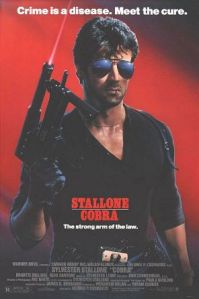 The seven minute bank heist at the beginning of Christopher Nolan’s “The Dark Knight” gave the film an immediate context for a superhero or supervillain to viably occupy: a land of the human superman. As the crime punctually unfolds, the sporadic dialogue between the criminals, spoken as each performs his function with the perfunctory ease of an accountant adding up dollars or a computer programmer writing a simple algorithm, serves to create an image of a mischief maker with means and malevolence beyond the reach of a human, despite the fact this world of heroes and villains is without the genetic extremities allotted to the alternate universes that gave us the “X-Men” and “Spiderman” franchises. Here, in Gotham City, the superpowers of its occupants are the abilities to incarnate the Manichean duals rather than the abilities to shoot lasers out of one’s eyes or to fly without wings or mechanical aide. “So why do they call him the Joker?” they continually ask themselves with absolute sincerity, when the exclusive “they” in the question should be substituted by an inclusive “we.” The Joker becomes exclusive from any speaker.
The seven minute bank heist at the beginning of Christopher Nolan’s “The Dark Knight” gave the film an immediate context for a superhero or supervillain to viably occupy: a land of the human superman. As the crime punctually unfolds, the sporadic dialogue between the criminals, spoken as each performs his function with the perfunctory ease of an accountant adding up dollars or a computer programmer writing a simple algorithm, serves to create an image of a mischief maker with means and malevolence beyond the reach of a human, despite the fact this world of heroes and villains is without the genetic extremities allotted to the alternate universes that gave us the “X-Men” and “Spiderman” franchises. Here, in Gotham City, the superpowers of its occupants are the abilities to incarnate the Manichean duals rather than the abilities to shoot lasers out of one’s eyes or to fly without wings or mechanical aide. “So why do they call him the Joker?” they continually ask themselves with absolute sincerity, when the exclusive “they” in the question should be substituted by an inclusive “we.” The Joker becomes exclusive from any speaker.
When the deed is done and the bank sufficiently robbed, we are finally introduced to the painted face of the Joker. But when he takes off his mask, instead of debunking the myth created by his former employees now deceased, we are given another mask, one that seems to confirm each rumor and every contradiction. “Whatever doesn’t kill you simply makes you stranger,” he laughs. Simultaneously he delivers both a joke and a prophecy. Instead of returning the Joker to the realm of mortals, the revealing of his face is his apotheosis.
This type of moment happens in each and every movie of Michael Mann, so it is no surprise that Nolan name dropped Mann—specifically mentioning “Heat”—when he talked about influences for the film.
***
Mann got his start, as filmmakers often do, in television, where he worked as a writer for “Starsky and Hutch” and more famously as an executive producer (not creator) of “Miami Vice,” among other projects. Even then the subject of his stories seemed to be from a different world, but maybe this was partly indebted to the ascribed Hollywood template of what a good guy on television can be: he is invincible no matter the peril; he is ultimately morally right no matter how tainted the back story; and he is his own boss no matter what level of the food chain he inhabits. But Mann seemed to take it a step further, and gave us the epitome of cool in Don Johnson’s Sonny Crockett and Philip Michael Thomas’s Rice Tubbs, with bright colors, sharp suits, fast cars, beautiful women and indefatigable charisma. Mann left “Miami Vice” after season 3, leaving Dick Wolf (“Law & Order”) in charge, to pursue other endeavors. It did not take long until the series went sour, but not before an indelible imprint was left on the American psyche. But that’s giving way too much credit.
***
After a quiet start in the 80s with “Thief” and “Manhunter” (the latter brought the first incarnation of Dr. Hannibal Lecter, an oleaginous Brian Cox, to the silver screen), he first gained popularity in the 90s from a book by James Fenimore Cooper. Written in 1826, the second installment in the five-book “Leatherstocking Tales” series, “The Last of the Mohicans,” was not a farfetched subject for Mann to tackle, even though there existed a part for a female lead (an aim Mann subsequently eschewed until “Public Enemies”). Part of Cooper’s intent in writing was as a show of rebellion against the presumed aesthetic of the American novel. Most of what he read he labeled as trash (need cite, excluding the infallible word of my high school English teacher), and to show his contempt, he ventured to spin an equally if not even more ludicrous yarn full of silly deus ex machina escapes and other literary follies, but to still reach (and scale) the heights of popularity of the texts he vehemently abhorred. This he accomplished. (A particular criticism Cooper continues to receive is for his subhuman portrayal of female characters, precisely echoing the common sentiment toward Mann’s distaff parts.)
Daniel Day-Lewis requires little intervention to elevate him to a seemingly divine level of performance (tears almost came to my eyes when he looks Madeleine Stowe’s former wooer in the eye and says, “One of these days you and I are going to have a serious disagreement;” okay, maybe I jest), but Mann still felt obligated to give his own hint of legend. In the opening scene, shortly following a written introduction—to give context to the story and a stamp of artificial literary provenance to the film (this is really just a glorified action movie, as the book was just a glorified action book, but this does not talk little of this film (but does talk little of the book))—the audience finds Hawkeye (Mr. Day-Lewis) outrunning a deer in the woods with two of his adopted Mohican family. As they glide through the forest like a trio of primeval wood elves, Mann chooses to keep the camera close to the ground, where a simple leap over a bush or a fallen log can become a voluntary suspension of gravity. These are not mere men we are witnessing, as if in answer to a question posed by a twit. This is the common creed of Mann.
The final twenty minutes of the movie are almost completely devoid of dialogue—there is only the “I am the last of the Mohicans” speech on the cliff edge before the credits—giving Mann a chance to play with his wrought supermen. One character runs through something like twenty Mohawk before finally falling to a stronger supervillian, Magua. Then Hawkeye and the remaining Mohican run through another twenty or thirty Mohawk, before a climactic (and short) battle of the titans ensues, with a mostly predictable conclusion. (Was there a John Woo reference in there when Hawkeye shot down foe after foe with a gun in each hand?) Do I care that this was the equivalence of a period Jean-Claude Van Damme movie? (Nothing against the Muscles from Brussels. JCVD, rock on!) Not in the least. Instead, with a simple but effective soundtrack and a reliance on the natural beauty of the Appalachian Mountains (substituting for upstate New York), this will remain a simple pleasure, easily palatable and almost (not so almost) powerful, mostly in part to the capacity of Mann.
***
More to come later…

 but it took me about four beers to get all the way to the end. (Maybe I’ll need to institute an alternative “beer rating” for movies.) I find movies fascinating because, even if the movie is lame, I feel each film serves to at least give a cursory glimpse at a certain demographic and its interests and expectations, even if it does have an unhealthy toy fetish.
but it took me about four beers to get all the way to the end. (Maybe I’ll need to institute an alternative “beer rating” for movies.) I find movies fascinating because, even if the movie is lame, I feel each film serves to at least give a cursory glimpse at a certain demographic and its interests and expectations, even if it does have an unhealthy toy fetish.